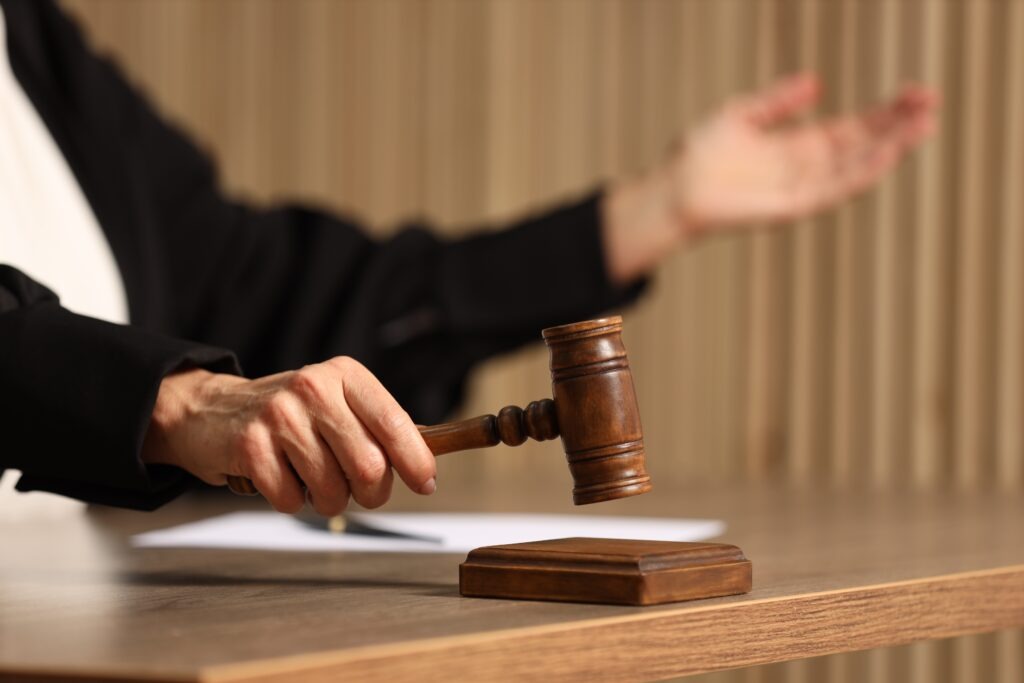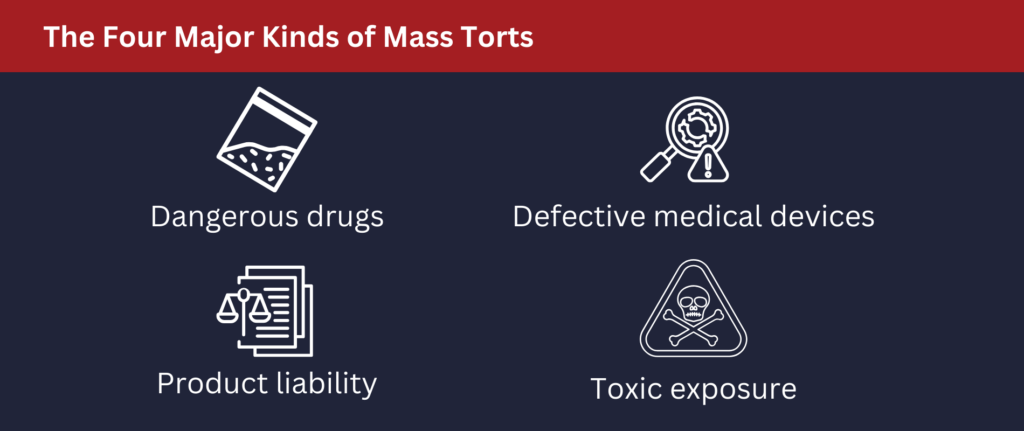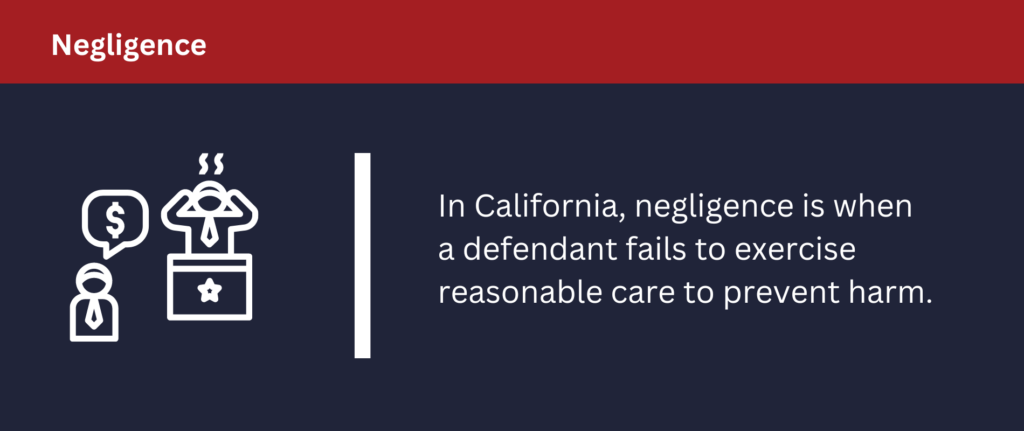
Mass torts are acts or omissions that harm or injure numerous people.
Mass torts are not composed of single cases. Instead, they are composed of groupings of individual cases that accuse the same defendants of the same civil wrongs. Because of this, mass torts are often consolidated into multidistrict litigation (MDL).
Mass torts are similar to but different from class action lawsuits. They may seek financial recoveries in situations where it’s not possible to certify a class for filing a class action lawsuit. They may also happen when filing a mass tort action is more advantageous than filing a class action lawsuit.
You may have heard that there are four major types of mass torts. This article will go into detail about the four major kinds of mass torts.
The Four Major Kinds of Mass Torts

The four major kinds of mass torts are:
- Dangerous drugs: Dangerous drug lawsuits seek to recover compensation for injuries caused by medications, such as Zantac.
- Defective medical devices: Defective medical device lawsuits seek to recover compensation for injuries caused by medical devices, such as Philips CPAP devices.
- Product liability: Product liability lawsuits seek to recover compensation for injuries caused by defective products, such as Similac and Enfamil.
- Toxic exposure: Toxic exposure lawsuits seek to recover compensation for injuries caused by exposure to toxic substances, such as paraquat.
What Do Mass Tort Lawsuits Allege?
There are specific causes of action that are frequently alleged in all four major kinds of mass torts:
- Negligence
- Strict liability – manufacturing defect
- Strict liability – design defect
- Strict liability – failure to warn
Negligence

Negligence is failing to exercise reasonable care in order to prevent harm. California juries are asked to evaluate what a reasonably careful entity would do in the same situation as the defendant. If the jury finds that the defendant behaved differently than a reasonably careful entity would behave in the same situation, the jury must find the defendant negligent.
Acting and failing to act can both be negligent. Doing what a reasonably careful entity wouldn’t do in the same situation is negligence, and not doing what a reasonably careful entity would do in the same situation is also negligence.
An example of negligence in a mass tort lawsuit would be a pharmaceutical company failing to adequately test medication before releasing it into the marketplace. A reasonably careful company would adequately test the medication before releasing it into the marketplace.
Strict Liability – Manufacturing Defect
While mass tort lawsuits often allege negligence, negligence doesn’t have to be proven to recover damages based on strict liability. Strict liability means that companies are strictly liable in California for any injuries caused by their defective products regardless of if negligence occurred.
Products are considered to have manufacturing defects if they are unreasonably dangerous because something went wrong during the manufacturing process. An example of a manufacturing defect would be valsartan being contaminated with the carcinogen NDMA during the manufacturing process.
Strict Liability – Design Defect
Products with design defects are unreasonably dangerous, even when manufactured and used properly. An example of a product with a design defect is paraquat, which may cause Parkinson’s disease (PD) even when manufactured correctly and used according to the directions on the package.
Strict Liability – Failure to Warn
Companies are strictly liable in California for damages caused by dangerous products when they know or should know their products are dangerous but fail to warn about the danger.
An example of a product with a failure to warn defect would be paraquat, as science has known that paraquat is toxic to humans since the 1960s. Science has also known that paraquat exposure can lead to the death of dopaminergic neurons (the death of these neurons causes the symptoms of PD) since 1999, yet paraquat is still sold and used in the United States today.
What Is a Mass Tort Settlement?
A mass tort settlement is when a mass tort defendant agrees out of court to pay a mass tort plaintiff a specific sum of money to compensate the plaintiff for their injuries. Mass tort settlements can occur before or after a lawsuit is filed, although they typically occur after a lawsuit is filed.
Mass tort settlements can compensate plaintiffs for many types of financial losses, including:
- Past, current, and future medical bills
- Lost wages
- Lost earning capacity
- Pain and suffering
- Disfigurement
- Permanent disability
If you or a loved one have been injured by a dangerous drug, defective medical device, defective product, or toxic substance, you may be seeking compensation for your injuries in the form of a mass tort settlement.
However, you will not receive a fair settlement offer that comes even close to offering you all the compensation you’re entitled to under California law unless you’re represented by experienced mass tort lawyers like Nadrich Accident Injury Lawyers.
Contact the Mass Tort Lawyers at Nadrich Accident Injury Lawyers
Nadrich Accident Injury Lawyers has been representing mass tort clients since 1990 and has recovered over $750,000,000 on behalf of clients in that time. We have the experience and expertise to prove that your injuries were caused by another party and hold that party responsible for your injuries.
We are contingency fee mass tort lawyers, so the only fee we ever charge is a percentage of any recovery we obtain for our mass tort clients. We do not charge our clients a fee until and unless we obtain a financial recovery for them. This way, anybody can afford to have our experienced, expert mass tort attorneys represent them.
Contact us today for a free consultation or text us from this page if you’re seeking a mass tort settlement. Let us fight for you.

